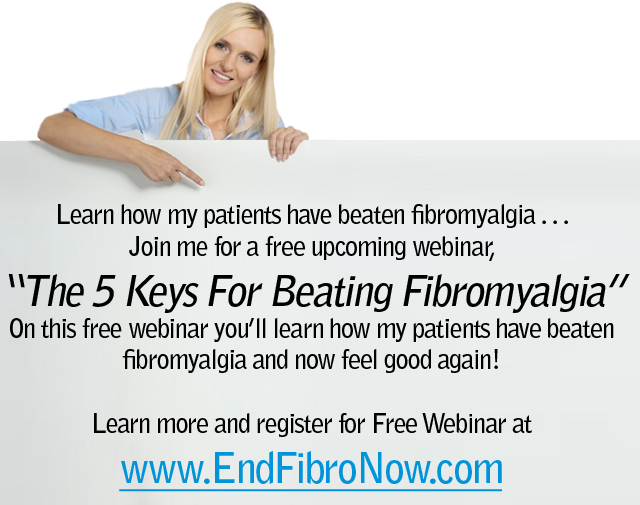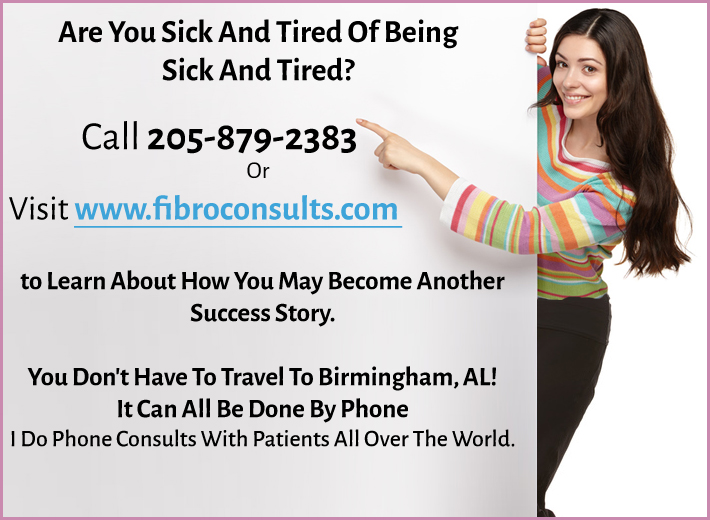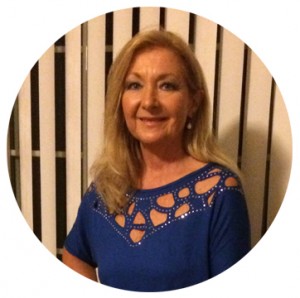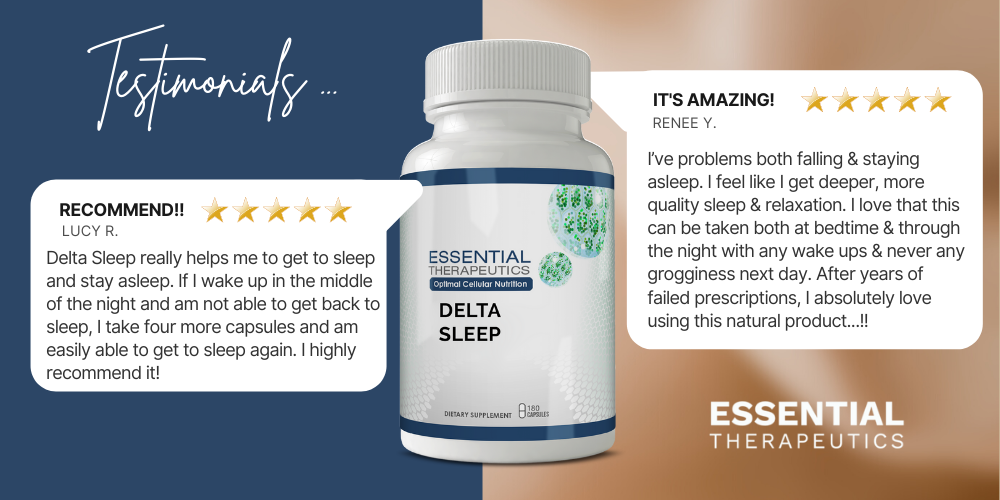Pam Overcomes Fibromyalgia and Shares Her Story
Some days, I didn’t think I could make it through the day. Well, I just hurt all over. My ankles hurt, my ribs hurt, my neck hurt, my shoulder hurt … I guess I hurt all over, except I don’t think my knees ever hurt. I didn’t feel like doing anything, didn’t feel like going out of the house. It’s hard to believe but I felt worse in the morning when I first woke up, than I did when I went to bed at night after laying there all night. I’d get up and I was tired-er than when I went to bed. It just kept getting worse and worse and I didn’t feel like doing anything. I couldn’t plan anything because I never knew if I’d feel like going out that day. It had been a really long time before I even wanted to go out and have lunch with my friends or whatever.
I can’t remember the last time I had to take anything for pain. I was taking Tylenol after I had tried Cymbalta, Mobic … they had me on just about everything. I can’t remember the last time I’ve had to take that. Sometimes I hurt a little bit, like today it’s raining outside and my shoulders hurt a little bit, but I don’t have to take a Tylenol. It doesn’t hurt that bad.
Dr. M: Compared to where it was, where are you now as far as your pain? If 0 is the worst and 10 is the best, what would you say you are overall with your pain?
Pam: I’d probably say 85%. After having it for 30 plus years, you always keep hoping that somebody is going to come along that can help you. After that long going and trying, you’re almost ready to just think you have to live with it the rest of your life. I feel so much better now and I’m so glad that I gave it one more effort. I can’t thank you enough for all your help.
In 2003 the first edition of my book, Treating and Beating Fibromyalgia and Chronic Fatigue Syndrome is first came out in print. It’s now in its 5th edition and available in most bookstores throughout North America, including Amazon.com, Barnes&Noble.com and most libraries. www.getfibrobooks.com or visit Amazon.com http://www.amazon.com/Treating-Beating-Fibromyalgia-Chronic-Syndrome/dp/0972893873
For the last 7 years, my practice has evolved to where I primarily work with patients by phone. I would say probably at this point 99% of my practice is working with patients by phone, patients throughout North America and overseas.
Unfortunately once you get the diagnosis most doctors will tell you that you just have to learn to live with it. I’m on a mission to change that because I really feel like that is a disservice that’s being done in the fibromyalgia community. The reason why doctors in the conventional world tell you that once you have fibromyalgia you just have to learn to live with it, is because they have nothing for you. That’s just the way it is. Traditional medicine, drug therapy alone is a dead end for fibromyalgia … That’s why after the last 20 years of trying to do it that way, doctors have come to the conclusion that once you get fibromyalgia, you can never feel good again. There’s nothing further from the truth. You can feel good again, but you have do it with a different approach other than just using conventional drug therapy.
In fact, the only way you can feel good and stay feeling good is you have to get healthy. That means different things for different people. It sounds simple but it’s actually very complicated. That’s why my book is 564 pages. There’s a lot to it that has to happen, to allow someone with a multitude of different conditions and illnesses that we call a syndrome called fibromyalgia … we have to find the root causes of these symptoms, because symptoms are nothing more than warning signs.
Yes, you have chronic, diffuse, achy, sometimes debilitating pain but what’s causing that pain? It’s not fibromyalgia. Fibromyalgia is just a name, it doesn’t cause anything. You have fatigue; many of my patients can’t get out of bed each day. I have patients that I’ve worked with, many of whom have shared their stories on this conference call and on my website who were bedridden for months, some patients for years before they started working with me and were able to uncover the root causes of that low energy and fix those causes … not just saying that they have fibromyalgia and that’s why they’re tired.
The challenge with having fibromyalgia is you have to find a doctor who number 1 believes in fibromyalgia; unfortunately there are still many doctors who don’t. Number 2, you have to find a doctor who’s going to do more than try to treat your symptoms with medications, or with over the counter supplements. You have to find a doctor who’s actually going to do the detective work, find out where you’re broken down and then work with you to help you not only feel good but to stay that way; to feel good and to get healthy so you stay that way.
Pam Newman From Florida Overcomes Fibromyalgia By Working With Dr. Murphree By Phone [weekly phone consults] And Shares Her Story
Dr. M: Today I have Pam Newman with me and she’s from Florida. She’s going to be sharing a little bit about her experience working with my clinic by phone over the last 6-7 months in a Fibromyalgia Get Healthy program. Pam, thanks again for being on my call. I’d like to ask you, when did you first get diagnosed with fibromyalgia? How long ago was that?
Pam: Oh gosh, I’d say it’s probably been 30 or 40 years Dr Murphree. I went to a rheumatologist, they told me I had it but they didn’t tell me anything to do about it. I just kept getting worse and worse. I guess about 2 years ago, I went and a rheumatologist told me that they thought I had … he didn’t believe in fibromyalgia but he thought I had lupus. I did all kinds of blood work, autoimmune diseases and stuff and it kind of really scared me. Gosh, it was all winter. I went and had all these tests and stuff done. He put me on Plaquenil and it gave me diarrhea. Then he switched me to Methotrexate and it made me throw up all the time. Neither one of them did a thing to help my fibromyalgia, I was feeling worse than ever. I don’t know if it was on Facebook or where, but I saw about your book and I ordered it off Amazon. I was reading part of it and just got so excited … you had that big long application to fill out. I went through all that and I said, “If you’ve accepted me, you thought you’d be able to help me.” I was afraid you weren’t even going to accept me. Anyway, we went through all that and started that. It was probably 5-6 months before I really started feeling any better at all.
Dr. M: Tell me prior to us working together, when was the last time you really felt good? How long ago was that?
Pam: Maybe about 8 or 9 years ago. I told my husband the other day, I couldn’t remember the last time I felt good. It had been that long.
Dr. M: It had been a while, yeah. Give me an idea of what were your symptoms prior to us working together? Tell me a little bit about your health challenges, what all were you experiencing?
Pam: I didn’t feel like doing anything, didn’t feel like going out of the house. It’s hard to believe but I felt worse in the morning when I first woke up, than I did when I went to bed at night after laying there all night. I’d get up and I was tired-er than when I went to bed. It just kept getting worse and worse and I didn’t feel like doing anything. I couldn’t plan anything because I never knew if I’d feel like going out that day. It had been a really long time before I even wanted to go out and have lunch with my friends or whatever.
Dr. M: Tell me a little bit about your pain.
Pam: Well, I just hurt all over. My ankles hurt, my ribs hurt, my neck hurt, my shoulder hurt … I guess I hurt all over, except I don’t think my knees ever hurt.
Dr. M: I think a lot of people who don’t have fibromyalgia can’t appreciate what you’re sharing but those who do, they know. They know exactly what you’re talking about. You hurt everywhere.
Pam: Yeah.
Dr. M: Tell me how did that limit you in what you could do and couldn’t do, with all that pain. Were you able to go out and do the things that you wanted to do? What was a typical day when you were at your work with fibromyalgia?
Pam: Well, I worked so I had to go to work no matter how I felt. I had to make myself get up in the morning and go to work every day. I’ve been retired about 3 years so that’s been really nice. I always thought I was a morning person but I don’t know what I was, because I didn’t feel good in the morning, I didn’t feel good in the evening or anything. It was a struggle just to go to work. Then I’d come home, just eat dinner and get ready to go to bed. I didn’t do much on the weekends either because I didn’t feel like doing anything.
Dr. M: Your energy was real low, tell me about that.
Pam: I just didn’t have any energy to do anything. My dad came to live with us and we were taking care of him. It took every bit of energy me and my husband had, just to take care of him while he was in bed all the time. I didn’t know if that was what was causing me to feel so bad at that time, or whether it was all the stress and stuff. Some days, I didn’t think I could make it through the day.
Dr. M: Now that we’ve been working together 6-7 months, as you said it took a while to see the results. I think that’s a challenge for a lot of people, they don’t give things enough time. I have the luxury that when I work with my patients, I get them to commit to working with me over a period of time. Compared to where you were, tell me about your energy and your pain now.
Pam: Well, I think the best thing for me was just getting all the inflammation out of my system. I think I was full of inflammation because I had eaten sugar, ice-cream and candy my whole life. Some days, all I had would be a candy and a Coke. I just didn’t eat good, I didn’t take care of myself and I think I was just full of inflammation. Sometimes, even my elbows would break out, both elbows at the same time in a little scab. I think it was the inflammation trying to get out of my system, out of my body. I haven’t had it out that long but once you get it out of your system, it’s amazing how much better you feel. I can’t remember the last time I had to take anything for pain. I was taking Tylenol after I had tried Cymbalta, Mobic … they had me on just about everything. I can’t remember the last time I’ve had to take that. Sometimes I hurt a little bit, like today it’s raining outside and my shoulders hurt a little bit, but I don’t have to take a Tylenol. It doesn’t hurt that bad.
Dr. M: Compared to where it was, where are you now as far as your pain? If 0 is the worst and 10 is the best, what would you say you are overall with your pain?
Pam: I’d probably say 85%.
Dr. M: So great deal of improvement, 80% better at least.
Pam: Yeah.
Dr. M: Tell me about your energy. What can you do now that you couldn’t do before?
Pam: Well, I can ride my bicycle. I can walk, I walk every day. I can clean my house some … that’s’ about it.
Dr. M: In the past I know if you overdid it, oftentimes you would crash. You would have 2-3 days where you felt really, really bad. You find that now you’re able to do more without crashing.
Pam: Yeah. I used to have to know when to say no, that I couldn’t do something. If I would overdo it, I would pay for it for 2-3 days later.
Dr. M: Exactly. Tell me about the diet, you mentioned about changing your diet. For a lot of people, it was a radical change as it was for you. Tell me a little bit about the diet. How did you find that experience?
Pam: I needed to lose a little bit of weight too, but my main thing was the inflammation and getting it all out. It was really hard, especially the first 3 days were bad. It felt some days that I want ice-cream and I could almost kill for one, but I just know I can’t have that if I want to feel good. Last week, I went to my sister in law’s house for dinner and they had hot fudge cake, and I had some of it. The next day, I felt terrible, my back hurt, my shoulder hurt and I hurt all over. I’m sure that sugar is one thing that I’m not going to be able to have a lot of, like I used to. You’ve just got to decide whether you like it bad enough to feel bad after you eat it.
Dr. M: Exactly. Sugar is a very common inflammatory causing agent, but not for everybody. What we find with the diet -and I’ve been using this particular diet for about 7 years now, is it doesn’t mean you can’t ever have some of those foods that you love which you know probably aren’t the healthiest thing in the world. But you find out that there are some of those that you just can’t have, they don’t agree with you. They may cause more pain or can cause you to have low energy, low moods, whatever it is. The big take away from this anti-inflammatory diet is you learn what you can and can’t eat. More importantly, you learn that what you eat dictates how well you feel.
Pam: Exactly, yeah.
Dr. M: You said it, you’ve got to make a decision because there are some foods that people will have to give up if they find out that those are a trigger for their pain. They have to decide, is it worth eating those foods or is it not worth eating those foods? For most people, they realize that they don’t want to ever go back to feeling that way again. Tell me, what was it like working with my clinic by phone mostly? What was that process like?
Pam: I was kind of skeptical at first, but actually with your blood work and all those blood tests, you picked up on some stuff like my thyroid that doctors that I’ve seen in person haven’t found. You’ve told me a couple of things, and then being able to do the urine analysis and stuff … I was pretty amazed that it worked as well as it did.
Dr. M: Good. Tell me what is different about working with me and my staff than working with other doctors? Obviously we’ve had quite a bit of success, where in the past others maybe have not. What do you think some of the differences are?
Pam: I think you all really believe in fibromyalgia and that there is such a thing. You want to help us. I think most rheumatologists are so into the lupus and autoimmune diseases and all that stuff. They want it to be that, to where they give you all this medicine that makes you feel worse, than trying to figure out the cause and fixing it instead of medicating it.
Dr. M: Exactly. I want to thank you for joining me and just one last question. Is there anything that you would like to share with those that may listen to this replay or read the transcript? Anything you’d like to share to help them in their possible decision to work with my clinic … is there any information you’d like to share with them?
Pam: After having it for 30 plus years, you always keep hoping that somebody is going to come along that can help you. After that long going and trying, you’re almost ready to just think you have to live with it the rest of your life. I feel so much better now and I’m so glad that I gave it one more effort.
Dr. M: Absolutely. I think a lot of people get really discouraged and people give up.
Pam: I was ready to.
Dr. M: Yeah.
Pam: I can’t thank you enough for all your help.
Dr. M: Oh you’re kind, thank you. That’s what I love to do. I’m just tickled that you’re another success story.
Pam: You’re so good at it.
Dr. M: I appreciate that. Thanks for joining me, I look forward to talking to you soon. Tell Bud hello, I hope you guys are doing okay. I’ll see you soon.
Pam: Okay, thanks so much.
Dr. M: Bye-bye. I want to thank Pam joining me today and sharing her story. It’s really inspirational to me, I hope it is to you. This is somebody that had been battling poor health for 30 years. Like a lot of folks, she’d been to a number of different doctors and no one really was able to help her. Not to bang my own drum, I’m not trying to do that but I am trying to get across the point that there is another option. Most of the time, people are trying to do the same thing which is they’re trying to find a doctor in the conventional world that can help them get on the right drugs for their ailment. The problem with that is with fibromyalgia, you can’t drug your way out of poor health. You just can’t do it.
You can’t go that route because that is based on adding a drug for every symptom that you have, to reduce those symptoms. It’s a drug to help you fall asleep, a drug to help you wake up, a drug for your pain, a drug to speed you up, a drug to slow you down and before you know it, you’re on half a dozen to a dozen drugs. Then you don’t know whether the drugs are helping or actually making you worse, because the majority of the people who are doing conventional medicine drug therapy alone don’t notice a huge difference. They’re just existing, they’re kind of settling … is this going to be a good day or a bad day? Is this a good week or a bad week? A year goes by and before you know it 30 years have gone by.
My mission is to make sure that the fibromyalgia community knows that you’ve got another option. Unfortunately, we’ve got a lot of doom and gloom out there because doctors have told patients that you just have to learn to live with it. People have tried so many things, it’s not that they haven’t tried. It’s not that they’re lazy. It’s just that they get so beat down and finally they give up. Many actually get very angry when I share these stories. They get angry because they think, how dare I share this … that it’s some kind of con job or it’s not true.
I think there are over 80 success stories on my website right now, and we’re going to keep adding these just like we’re going to add this one. Every week, we’ll keep adding these and the purpose of that is that people can see these are real people. These are real people, with real stories, that had fibromyalgia. Once you have it, it’s something that you’ve got to take care of and you can’t ever let it rear its ugly head again. Whether we call it curing it or overcoming it … I prefer beat it.
When I say “Treating and Beating” it implies that they’ve put that monster in the closet. They control it now. They know how to take care of themselves and do the things that I encourage them to do. It’s a lifetime commitment but it’s worth it, because they’re able to do the things that they couldn’t do beforehand. They’ve got their life back. If this resonates with you, if you’ve not read the book I encourage you to read the book and see if it makes sense to you. To do that, you can get it on Amazon.com or on my website YourFibroDoctor.com, many bookstores or Barnes&Noble.com … but read the book and see if it makes sense to you.
Some people are going to read the book and think, oh my gosh I’m going to need some help. Other people are going to read the book and they can use it like a self-help guide. If you read the book and you think I’m just too sick and I’m going to need some help, that’s what I’m for. That’s when you would set up a phone consult and you would do that by calling the clinic or going online to www.YourFibroDoctor.com. You can set up a phone consult, and what I’ll do is I’ll let you know if I can help you or not. If I can, I’ll lay out some options about how we can help you feel better and possibly even be another success story. You don’t have to learn to live with it. If you are, then that’s a choice you’re making.
We can now validate story after story of people who go through this program that I’ve developed over the last 20 years, and it works. It works for the majority of people; 85-90% of the people who come through my program see a dramatic difference, improvement in their health and life.
That’s why I continue to have them come on and have them share their stories, and add these success stories every week.
This is Dr Rodger Murphree, www.YourFibroDoctor.com. Thanks for listening to this audio presentation and I look forward to meeting some of you through a phone consult in the future.
These patients and hundreds of others who’ve worked personally with me have in fact beaten their fibromyalgia. You can read or listen to their stories by clicking the link below:
|
|














Leave a Reply
Want to join the discussion?Feel free to contribute!